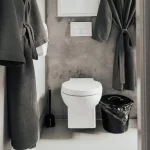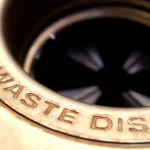Spring is here, and with the gradual warm-up in the weather, you can expect to find a number of plumbing problems in a Toronto home. Probably one of the most problematic is leaky pipes in the walls. Whether you live in a new house or an older one, it’s possible that any cracks or gaps in the infrastructure will have allowed cold air to enter during the winter. Although it hasn’t been the coldest winter on record by any means, the temperature dropped down to around minus 15 C several times. This could have led to temporary or partial freezing of any cold water pipes exposed to the chill. The ice in the pipes expands and can cause hairline cracks, which on thawing results in a leak.
Checking for Leaky Pipes
Once the temperature rises above freezing point and stays there for several days, it’s a good time to check for leaky pipes and any other issues requiring plumbing repairs:
- Start by searching for the most obvious signs – water pooling, patches of damp or mold on walls or inside the bathroom and kitchen cabinets
- Check the joints where pipes meet –the pipe threading may have weakened, allowing a few drops to seep through
- Check the outside of the home for wall cracks, particularly those with discoloration around them or water seeping out
- Make sure no faucets are running in the house and check the water meter over a couple of hours. If it continues to move, it could be a sign that you have a leak somewhere.
Once you are able to identify the source and severity of the leak, you can determine whether you need professional help to repair it or if you can do it yourself.
Temporary Measures
For serious leaky pipes, you may need to turn off your water supply and take steps to contain the water until you can get a professional plumbing contractor out to take a look. If the leaks appear to be minor, however, you may be able to resolve them temporarily with plumber’s putty or a repair kit from your local hardware store. These are typically kits containing peel-and-stick patches made from a flexible, viscous material that you can cut to size and which bonds to virtually any surface. Because of the pliability of the material, the patches yield to regular expansion and contraction, and the surface is paintable in case your leak is in a highly visible area.
Professional Repairs
Leaky pipes are one of the four most common plumbing problems in a Toronto home. What the plumber may do in the case of leaky pipes is to use a camera inspection to find the source of the leak if necessary, and then take steps to replace the damaged section of pipe. In some cases, this may require the removal of sections of the wall to reach the pipe, which can then be replaced afterward. Even if this is the case, it’s likely to cost less than the potential expense of replacing an entire wall to repair damage from flooding if the pipe bursts.
If you think you may have leaky pipes and need help, contact your local plumber for an inspection and an estimate.







Avoiding damage to your home from burst pipes in the wintertime can be done fairly easily. This article explains the few basic steps you can take to winterize your pipes.A quick thanks for this article.
Good point. It should be better to check the pipes when the temperature is warmer. Nice post. Gotta recommend this on social media.
More power.